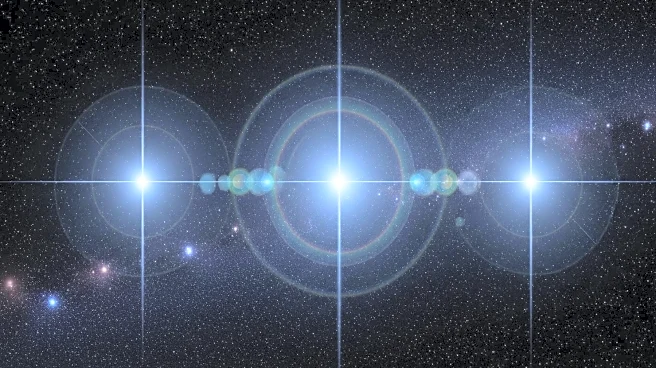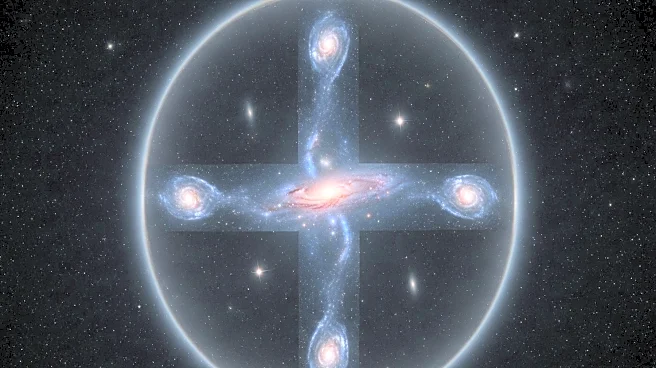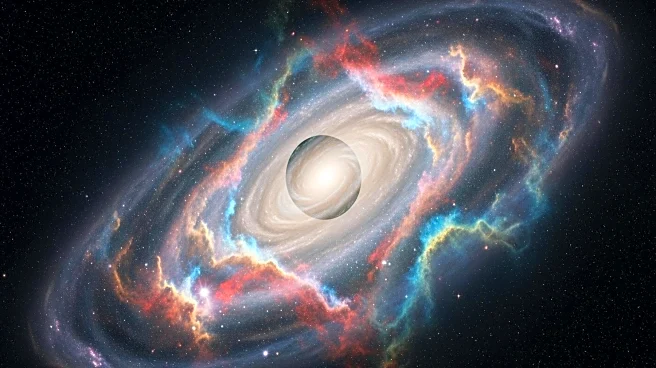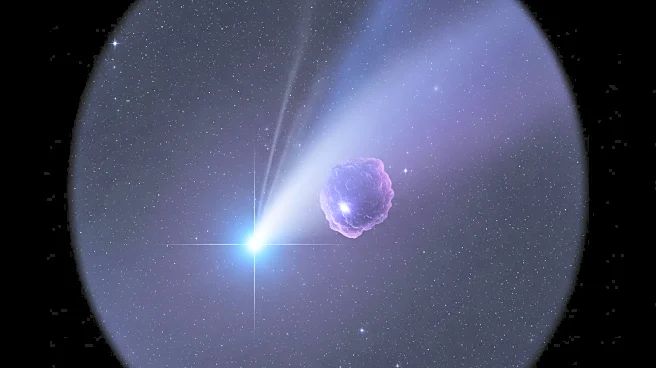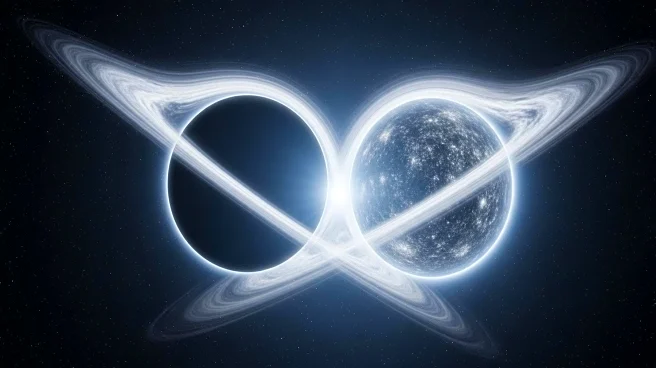What's Happening?
Astronomers have discovered an unprecedented fifth image in an 'Einstein Cross', a phenomenon where light from a distant galaxy is bent by the gravitational force of closer galaxies, creating a cross-like pattern. This unexpected fifth image suggests the presence of a massive dark matter halo, according to a study published in The Astrophysical Journal. The discovery was made using the Atacama Large Millimeter/submillimeter Array (ALMA) in Chile, focused on a galaxy 11.6 billion light-years away. Initially thought to be a technical glitch, further analysis confirmed the fifth image as a result of dark matter's influence, providing new insights into cosmic phenomena.
Why It's Important?
The discovery of a fifth image in the 'Einstein Cross' is significant for the field of astronomy and our understanding of dark matter. It offers a rare opportunity to study both the distant galaxy and the dark matter surrounding the foreground galaxies. Dark matter, which constitutes a large portion of the universe's mass, remains largely invisible and is detectable only through its gravitational effects. This finding could lead to advancements in modeling and understanding the distribution and impact of dark matter in the universe. It also highlights the potential of gravitational lensing as a tool for uncovering hidden cosmic mysteries.
What's Next?
Following this discovery, astronomers plan to further investigate the 'Einstein Cross' to understand the physics of the galaxies involved and the characteristics of the dark matter halo. They aim to quantify limits on the dark matter halo and any associated stellar emissions, potentially revealing substructures within the halo. This research could contribute to broader studies on dark matter and its role in the universe. Future observations and simulations may refine our understanding of gravitational lensing and its applications in astronomy, paving the way for new discoveries about the universe's composition and behavior.

